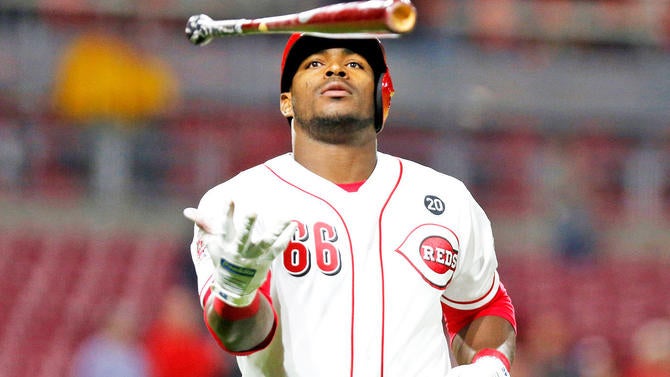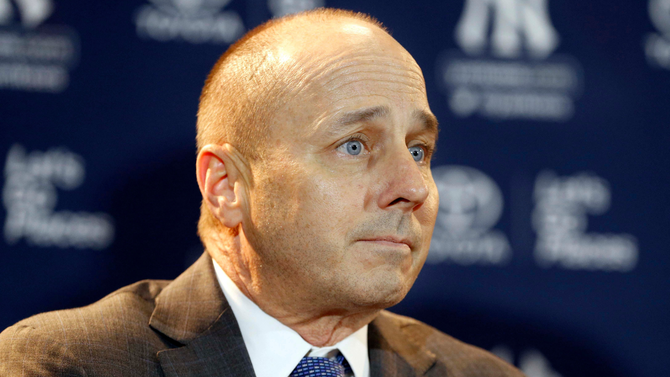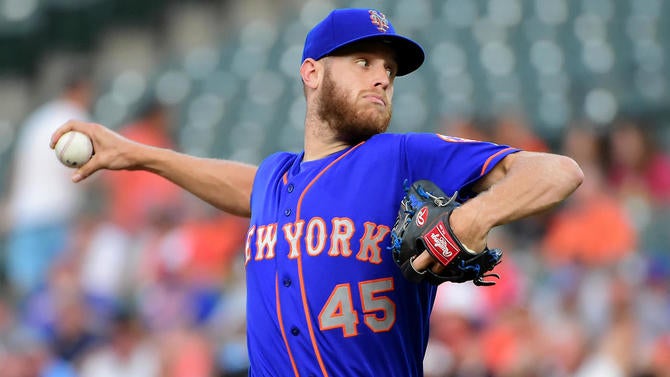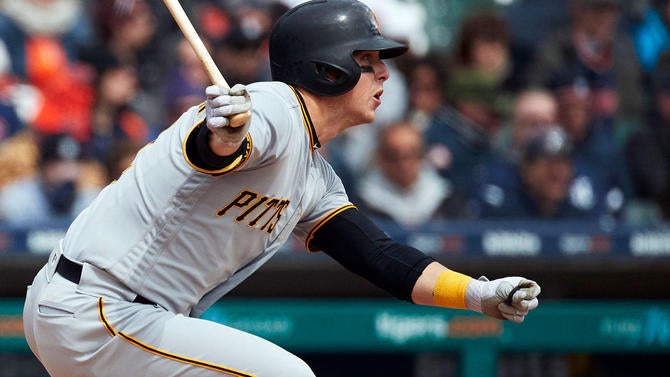MLB trade deadline: Nine biggest questions we have for July 31, including the Yankees' plans
There is only one trade deadline in 2019, and teams have some decisions to make soon
Now that the All-Star Game has passed, it's time to focus on the July 31 trade deadline. Unlike in years past, this season will feature just the single deadline. There will be no August waiver trade period, as the league and union wanted to preserve the competitive integrity of the season's late stages. Whether that works as designed is anyone's guess. But, with two and a half weeks to go, we wanted to preview the deadline by asking (and answering as best as we could) nine important questions that will shape how this year's trade market plays out.
Note that these questions aren't presented in any particular order. Onto the content, people.
1. Will the Reds sell?
No team has the potential to be hurt more by the single deadline than the Cincinnati Reds. During the winter, the Reds took the bold approach of acquiring numerous veterans on expiring contracts, hoping they'd find a way into the playoffs for the first time since 2013.
If the season ended today, the Reds would fall short of their goal. Cincinnati has spent most of the year in last place, and will enter the second half with a losing record. There is reason to believe this Reds team is better than its record suggests: a plus-27 run differential that is tied with Cleveland for the 12th best in baseball, and is better than the marks posted by the St. Louis Cardinals (plus-2), the Milwaukee Brewers (minus-17), and the Pittsburgh Pirates (minus-49)
Run differential can be misleading in certain circumstances -- like when a team has the high-leverage struggles the Reds had earlier in the year -- but it tends to be a more trustworthy gauge of team quality than won-lost record, even more than halfway into the season. The Reds, then, have a tough call to make: do they hold on to the belief they could threaten for the National League Central crown, or do they concede this isn't their year and tear things down?
If the Reds do decide to sell, they should have no problem finding takers for many (if not all of) their impending free agents: outfielder Yasiel Puig, second baseman Scooter Gennett, shortstop Jose Iglesias, and pitchers Tanner Roark, Alex Wood, and David Hernandez. No matter what, the Reds may end up impacting a divisional race.

2. How high will the Rays aim?
Although the Tampa Bay Rays have cooled since their hot start, they remain in the thick of the wild card race. The Rays, who haven't reached the postseason since Andrew Friedman and Joe Maddon left (those two have since combined for three World Series appearances elsewhere), have both the lowest payroll (by more than $10 million) and perhaps the deepest farm system. In other words, there's no good reason for Tampa Bay to stand pat at the deadline.
Just what might the Rays pursue?
According to league sources, the Rays have been seeking pitching help, be it in the form of starters or relievers. The Rays aren't just shopping for rentals, either. They've engaged on relievers who, in some cases, have not yet reached the arbitration stage of their careers. Tampa Bay is willing to move infield prospect Nick Solak due to its evaluation of his defense. In the past, the Rays have also been open to dealing outfield prospect Jesus Sanchez.
The Rays have made a habit out of finishing in second place on marquee free agents and trade targets over the past eight months. We think they'll land at least a reliever ahead of the deadline, but wish they'd better leverage the opportunity in front of them.
3. Will the Marlins move a starter?
The other Florida-based team could be active on the pitching market as well. And if they move a starter, it may not be surprising left-hander Caleb Smith, someone who seems like a strong trade candidate.
Instead, the Miami Marlins are said to be open to moving right-hander Trevor Richards.
Richards, 26, has one of the best changeups in baseball and is under team control through the 2024 season. In 225 career innings, he's compiled a 91 ERA+ and 2.20 strikeout-to-walk ratio -- numbers suggesting he's roughly a league-average starter, give or take a little.
Unlike with most of Miami's trades in recent seasons, the motivation behind shopping Richards has nothing to do with finances. They simply have a surplus of pitching, and he's the one they've identified as expendable. In addition to Smith and Richards, the Marlins have youngsters Sandy Alcantara, Jordan Yamamoto, Zac Gallen, and Elieser Hernandez to find starts for -- oh, and Jose Urena and Pablo Lopez are working their way back from injury.
It's unclear if the Marlins will find a Richards deal to their liking ahead of July 31 -- predictably, the word is they're asking for a lot -- but keep him in mind as a darkhorse trade candidate.

4. How much can the Yankees add?
Baseball's owners have tried (and failed) time and again to enact a salary cap. In recent years, they've done the next best thing in their eyes: treating the luxury tax as an unofficial cap. As such, any and every team who makes a move will do so with the luxury tax threshold in mind.
For those wondering, the New York Yankees have some flexibility before getting into the steepest set of penalties associated with going over the line. Per Cot's Contracts, Brian Cashman's club is more than $26 million over the tax line. What that means is Cashman could conceivably acquire, say, Madison Bumgarner, whose tax number is $12 million, as well as a moderately priced reliever without having the Yankees' earliest draft pick fall 10 spots.
Keep in mind, a team's payroll doesn't always reflect its tax number -- the former is based on seasonal salary, while the latter is based on average annual value.
5. Who are the surest bets to be traded?
As a general rule of thumb, the players most likely to be dealt before the deadline are those who are impending free agents stuck on noncompetitive teams. Pitchers, in particular, are more likely to go because the market for them is naturally larger than any given hitter.
With those rules in mind, we think San Francisco Giants reliever Will Smith and New York Mets starter Zack Wheeler are all but certain to have new teams when August rolls around. Both are scheduled to be free agents and have little long-term value to their current teams. In Smith's case, he's likely to be in high demand. Meanwhile, some team might view Wheeler as an attractive downmarket alternative with upside on the starting pitching market.

6. Do the Dodgers need anything?
The Los Angeles Dodgers have the best run differential in baseball, 13 runs better than anyone else and more than 60 runs better than any other National League club. They seem well-positioned to win a third consecutive NL pennant come this October.
Nonetheless, we still think they'll try adding at least one reliever before the deadline passes.
As it stands, the Dodgers can count on Kenley Jansen and, uh, Pedro Baez. (Ross Stripling and Julio Urias both both have ERA+ over 110 as well.) The Joe Kelly signing hasn't worked out in the slightest, while Yimi Garcia is too homer-prone to trust in high-leverage situations.
The Dodgers don't have to add another closer, but bringing in a veteran with late-inning experience seems like a wise idea.
7. How will the single deadline impact things?
We mentioned the deadline in the introduction, but it's a question worth addressing on its own.
August used to be the time when bench players and relievers would get moved for pennies on the dollar. With that option gone, it's not clear if those moves will be pushed into July or out of existence. One front-office type speculated the former is more likely.
If so, the reserve market could result in more action than usual in July. Get pumped, everyone.
8. Which fringe contenders will sell?
The bottom of the league features some truly horrid teams. The Marlins, Toronto Blue Jays, Kansas City Royals, Detroit Tigers, and Baltimore Orioles are all on pace to lose more than 100 games, with the Orioles at least threatening a 113-plus loss campaign. Unsurprisingly, those teams have only so many pieces who are appealing to contenders -- otherwise, they'd be better.
Between that and the reality of the wild-card races -- there are five teams within three games in the AL; eight teams within three games in the NL -- it's all but certain that some fringe contender is going to withdraw from the race and sell when it could justify buying.
Which one will it be?
That's tougher to nail down. The Rays, Cleveland, and the Oakland Athletics -- the top three teams in the AL wild race race -- each operate on a logic-over-emotion basis. Yet it's hard to see any of the three truly folding, barring a weird couple weeks. (Cleveland could shake up everything by moving Trevor Bauer, were they to get a compelling offer.) Further down in the standings, the Boston Red Sox seem unlikely to throw in the towel as well.
The Texas Rangers, then, seem likeliest in the AL race. Texas could make Mike Minor, Lance Lynn, Jesse Chavez, and Hunter Pence available if they so wish. Minor and Lynn have both pitched well this season, while Chavez's versatility would make him a fit on most any contender. The Rangers, to their credit, are in this position in part because they signed veterans over the winter when similar teams -- i.e. those who didn't look like realistic contenders -- opted out. Perhaps Texas will stand pat and hope fortune continues to favor the bold.
As for the NL -- well, it's a mess.
The Washington Nationals, Philadelphia Phillies, Milwaukee Brewers, and St. Louis Cardinals don't seem likely to sell. The San Diego Padres could in theory move closer Kirby Yates, but who knows. That leaves the Arizona Diamondbacks, Colorado Rockies, and Pittsburgh Pirates. Of those three, the Pirates seem likeliest -- outfielder Corey Dickerson, starter Jordan Lyles, and reliever Francisco Liriano are each impending free agents who could appeal to contenders.

9. Can the Twins keep up?
The Minnesota Twins were perhaps the best team-level story in baseball during the first half. Fairly or not, the Twins don't get mentioned alongside some of the other top teams as it pertains to being busy at the deadline. The Twins could certainly stand to add another veteran reliever -- and should have the means to do more if they so desire.
Minnesota is about $10 million short of last year's record payroll. It stands to reason ownership will be okay with them using at least a few million of that (if not more) to upgrade where they can. As for prospects, the Twins are regarded as having a top-10 farm system. They won't move their best -- shortstop Royce Lewis and outfielder Alex Kirilloff -- but the belief around the league is almost anyone else would be up for discussion if their targets merited it.
To wit, the Twins have reportedly inquired with the Blue Jays on what it would take to land both Marcus Stroman and Ken Giles. There's no telling if they'll be able to pull off that deal or something similar, but it does show the Twins are being aggressive and creative -- much as they were during the winter.


















